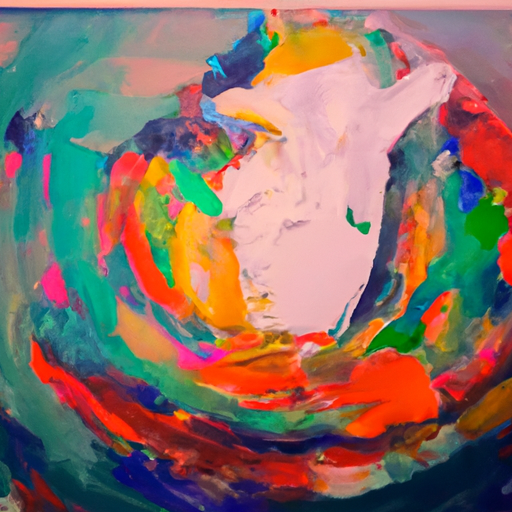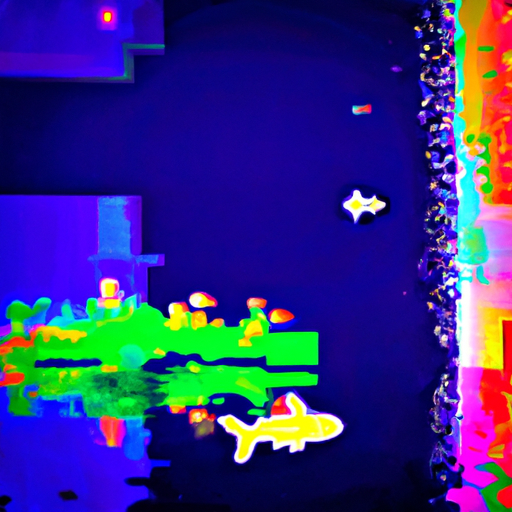
-
Table of Contents
- Designing Otherworldly Concepts: Beyond Realism
- The Significance of Otherworldly Design
- 1. Entertainment Industry
- 2. Gaming Industry
- 3. Advertising and Marketing
- Techniques for Designing Otherworldly Concepts
- 1. Concept Art
- 2. Digital Sculpting
- 3. Visual Effects
- The Impact of Otherworldly Design
- 1. Inspiring Creativity and Imagination
- 2. Creating Memorable Experiences
- 3. Fostering Cultural Exchange
- Summary
Designing Otherworldly Concepts: Beyond Realism

When it comes to design, the possibilities are endless. While realism has long been a dominant approach in design, there is a growing trend towards exploring otherworldly concepts. Designers are pushing the boundaries of imagination and creating captivating visuals that transport viewers to fantastical realms. In this article, we will delve into the world of otherworldly design, exploring its significance, techniques, and the impact it has on various industries.
The Significance of Otherworldly Design
Otherworldly design offers a departure from the mundane and familiar, allowing designers to tap into the realm of fantasy and imagination. By creating concepts that go beyond realism, designers can evoke emotions, spark curiosity, and captivate audiences in ways that traditional design cannot. This form of design is particularly relevant in industries such as entertainment, gaming, and advertising, where the goal is to transport viewers to new and exciting worlds.
1. Entertainment Industry
The entertainment industry thrives on captivating audiences and providing them with immersive experiences. Whether it’s through movies, television shows, or live performances, otherworldly design plays a crucial role in creating visually stunning and memorable moments. Take, for example, the movie “Avatar” directed by James Cameron. The film’s otherworldly concept of the planet Pandora, with its lush landscapes and unique creatures, transported viewers to a visually stunning and immersive world.
Similarly, in the world of theater, productions like “The Lion King” and “Wicked” incorporate otherworldly design elements to transport audiences to magical realms. The use of elaborate costumes, set designs, and visual effects creates a sense of wonder and awe, enhancing the overall experience for the audience.
2. Gaming Industry
The gaming industry is another realm where otherworldly design thrives. Video games allow players to step into virtual worlds and embark on epic adventures. Designers in this industry have the freedom to create fantastical landscapes, characters, and creatures that push the boundaries of reality.
One notable example is the game “The Legend of Zelda: Breath of the Wild.” The game’s vast open world, filled with diverse landscapes and imaginative creatures, immerses players in a truly otherworldly experience. The attention to detail in the game’s design, from the intricate architecture to the unique flora and fauna, showcases the power of otherworldly design in creating captivating gaming experiences.
3. Advertising and Marketing
In the world of advertising and marketing, capturing the attention of consumers is paramount. Otherworldly design can be a powerful tool in creating memorable and impactful campaigns. By incorporating elements of fantasy and imagination, brands can stand out from the crowd and leave a lasting impression on their target audience.
One example of this is the “Share a Coke” campaign by Coca-Cola. The campaign featured personalized bottles with individual names, but it also went beyond realism by incorporating otherworldly elements. The bottles were adorned with whimsical illustrations of fairies, unicorns, and other fantastical creatures, creating a sense of magic and wonder. This unique approach not only caught the attention of consumers but also sparked conversations and social media buzz.
Techniques for Designing Otherworldly Concepts
Designing otherworldly concepts requires a combination of creativity, imagination, and technical skills. Here are some techniques that designers can employ to bring their otherworldly visions to life:
1. Concept Art
Concept art is a crucial step in the design process, especially when it comes to otherworldly concepts. It involves creating visual representations of ideas, characters, environments, and objects. Concept artists use various techniques such as sketching, digital painting, and 3D modeling to bring their visions to life.
For example, in the movie “Guardians of the Galaxy,” concept artists played a vital role in designing the otherworldly characters and environments. Their concept art served as a blueprint for the final visual effects, ensuring that the film’s otherworldly elements were cohesive and visually stunning.
2. Digital Sculpting
Digital sculpting is a technique that allows designers to create three-dimensional models using specialized software. This technique is particularly useful for designing otherworldly creatures, characters, and objects. By sculpting in a digital environment, designers have the freedom to experiment with shapes, proportions, and textures, pushing the boundaries of what is possible in the real world.
For instance, in the video game “World of Warcraft,” digital sculpting played a crucial role in creating the game’s diverse range of otherworldly creatures. The ability to sculpt intricate details and unique anatomies allowed the designers to bring their fantastical visions to life.
3. Visual Effects
Visual effects are a powerful tool in creating otherworldly concepts. From realistic simulations to fantastical explosions, visual effects can enhance the overall design and create a sense of awe and wonder. Techniques such as compositing, particle systems, and motion tracking are commonly used in the creation of visual effects.
One notable example of the use of visual effects in otherworldly design is the movie “Doctor Strange.” The film’s visual effects team created mind-bending sequences that defied the laws of physics, immersing viewers in a truly otherworldly experience. The use of visual effects allowed the designers to push the boundaries of reality and create a visually stunning and immersive world.
The Impact of Otherworldly Design
Otherworldly design has a profound impact on various industries and audiences. Here are some key ways in which it influences our lives:
1. Inspiring Creativity and Imagination
Otherworldly design sparks creativity and imagination, both in the designers themselves and in the viewers. By presenting concepts that go beyond realism, designers inspire others to think outside the box and explore new possibilities. This can lead to groundbreaking innovations and fresh perspectives in various fields.
2. Creating Memorable Experiences
Whether it’s through movies, games, or advertising campaigns, otherworldly design creates memorable experiences for audiences. By transporting viewers to fantastical realms, designers evoke emotions, spark curiosity, and leave a lasting impression. These experiences can shape our memories and influence our perceptions of the world around us.
3. Fostering Cultural Exchange
Otherworldly design often draws inspiration from different cultures, myths, and folklore. By incorporating elements from diverse traditions, designers foster cultural exchange and promote understanding and appreciation of different cultures. This can lead to a more inclusive and interconnected global community.
Summary
Designing otherworldly concepts goes beyond realism, allowing designers to tap into the realm of fantasy and imagination. This form of design is significant in industries such as entertainment, gaming, and advertising, where the goal is to transport viewers to new and exciting worlds. Techniques
